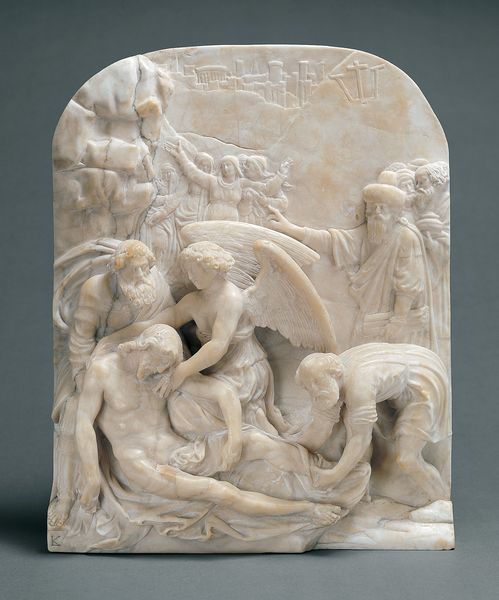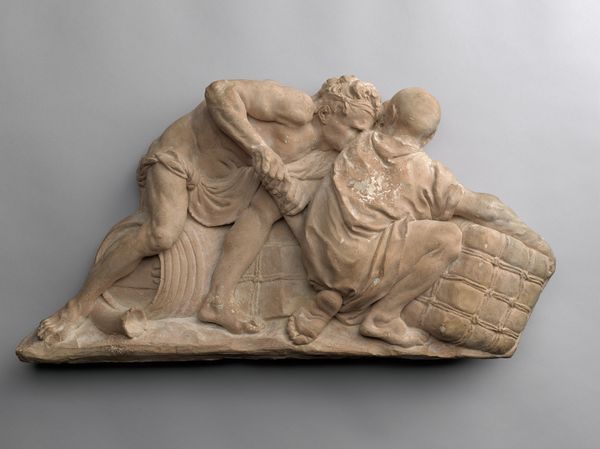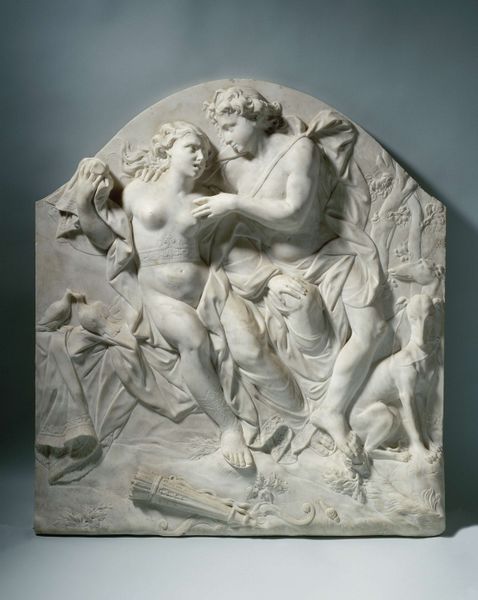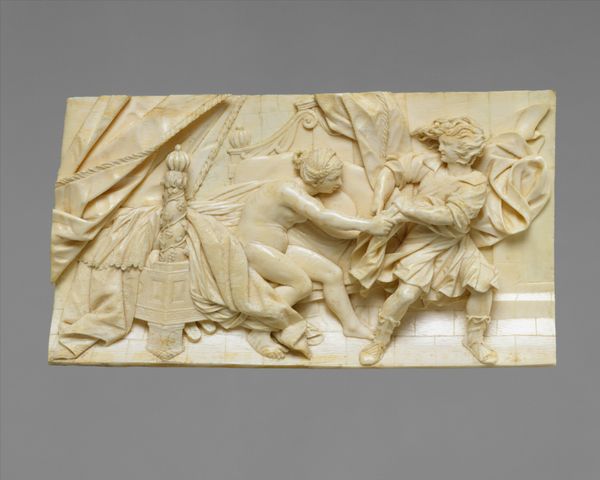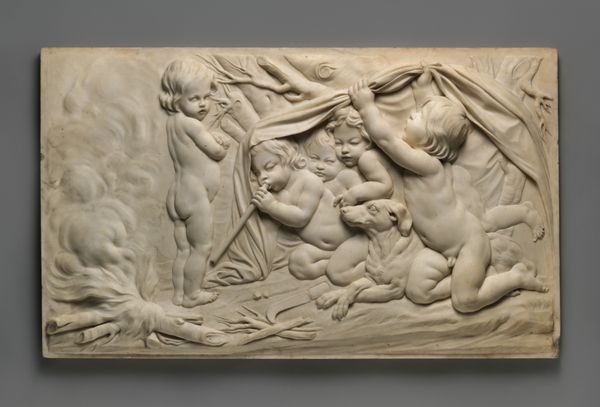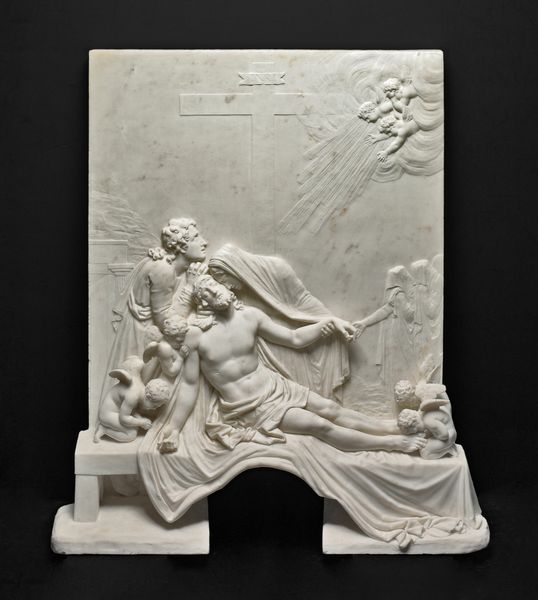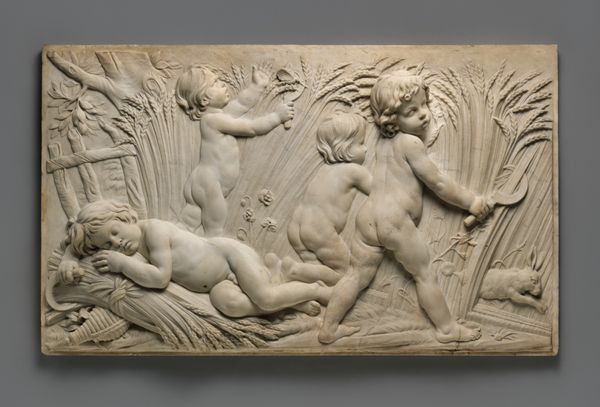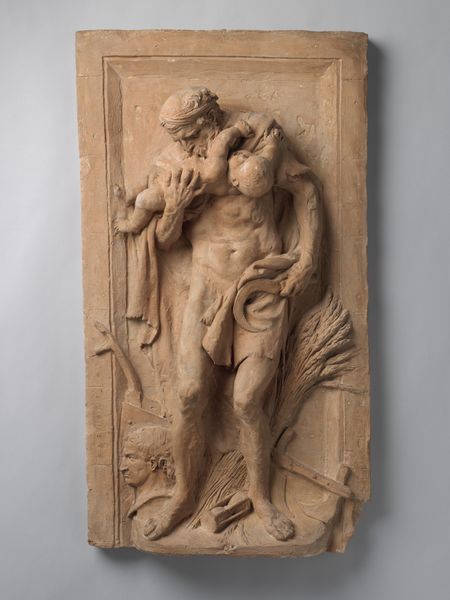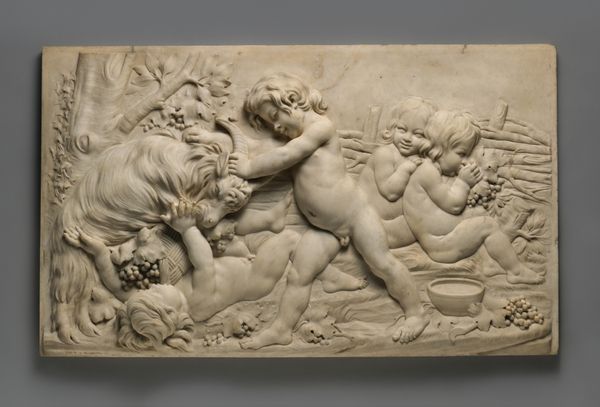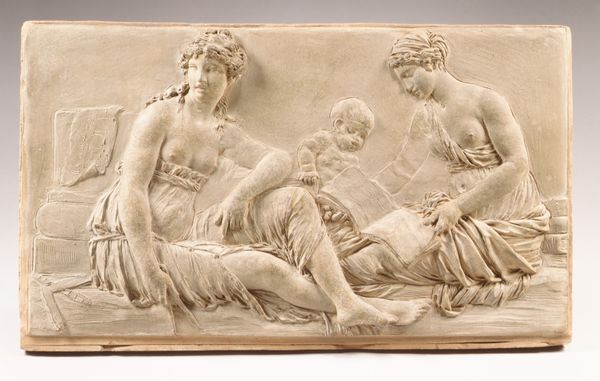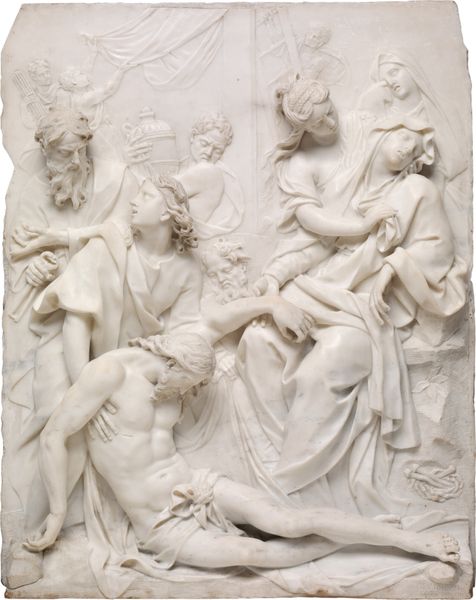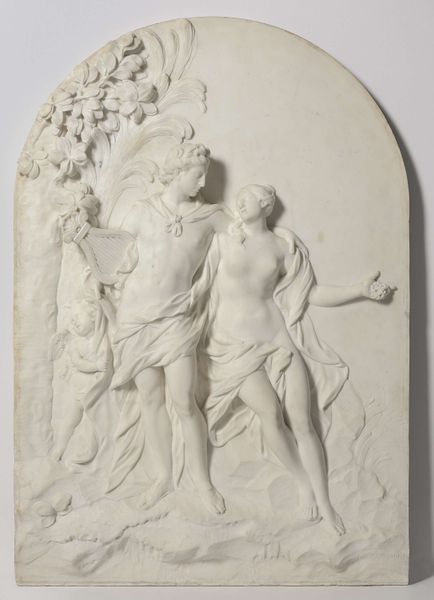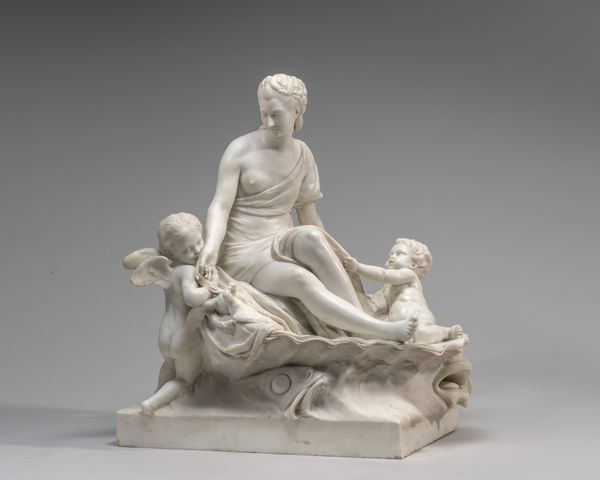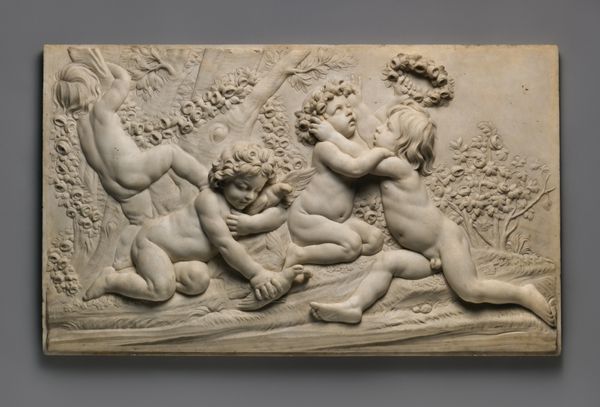
carving, relief, sculpture, marble
#
portrait
#
neoclacissism
#
carving
#
narrative-art
#
sculpture
#
relief
#
figuration
#
sculpture
#
history-painting
#
decorative-art
#
marble
Dimensions: 7 1/8 × 10 1/4 in. (18.1 × 26 cm)
Copyright: Public Domain
Curator: Before us, we have "Pyramus and Thisbe," a marble relief carving by Gebhard Boss, crafted between 1770 and 1785. It is currently held here at The Met. Editor: Well, that's a rather… dramatic composition, isn't it? The stark white marble amplifies the sense of tragic theatricality. The angular, almost exaggerated poses of the figures evoke a very strong sense of heightened emotion, of overwrought pain. Curator: Indeed. Boos has masterfully captured the most poignant moment of Ovid’s tale. Note the precise rendering of musculature on Pyramus, and the flowing drapery of Thisbe's garment; the technical skill required for such detailed carving in marble is undeniable. Editor: True, but I can't help but read this in light of the burgeoning Neoclassical obsession with antiquity – an era when such "tragic love" stories often masked very real socio-political concerns. The extreme poses, the chiseled idealization of the body... Doesn’t it, in some ways, also serve to normalize very restrictive gender roles, where female expression culminates in hopeless lament? Pyramus has taken his fate into his own hands with his suicide while Thisbe's world is dominated by loss. Curator: An intriguing interpretation! I am more drawn to the interplay between form and content. The dynamic composition, particularly the converging lines that draw the viewer's eye to the very moment of Thisbe’s discovery, heightens the emotional impact. The carving showcases the artist's masterful handling of negative space to bring clarity to the story, highlighting a specific classical approach to history painting. Editor: And yet, aren't those 'converging lines' representative of the literal barriers in place to prevent her union to Pyramus and, more broadly, a systemic denial of female agency? The figures, although classically proportioned, appear almost staged, reinforcing, perhaps unintentionally, the limited range of expressions available to women in this historical context. And is her fate not implicitly linked to those established lines? Curator: It's a powerful connection that bears considering. This relief is a technical and formal masterpiece, drawing its power from precise details that can have broad appeal to the average museum-goer. Editor: Exactly. And those details aren’t limited to their material execution. Hopefully this carving may open visitors’ minds to larger conversations, revealing the complexity within art – the ongoing tensions between what is sculpted and the societies from which the sculptor emerges.
Comments
No comments
Be the first to comment and join the conversation on the ultimate creative platform.
